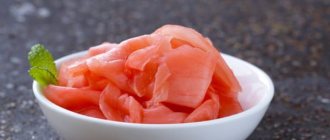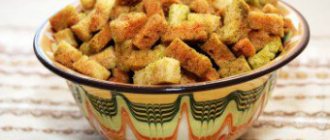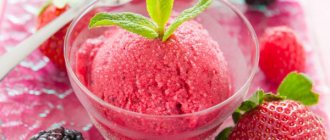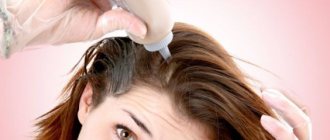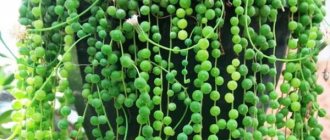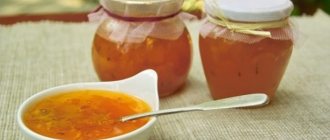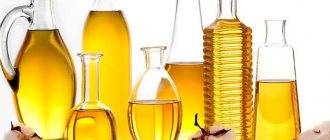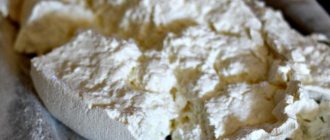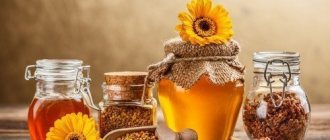Among beekeeping products known for their healing properties, royal jelly stands out as particularly beneficial (more about it here), which is used for medicinal and preventive purposes for almost all diseases. This unique product strengthens the immune system, has a beneficial effect on the functioning of all body systems, and also improves skin condition.
Bee milk has a consistency similar to sour cream. It has a white-cream or light yellow color, pearlescent luster, sour taste and delicate aroma. It is made by worker bees based on beebread, adding to it a special secretion from their glands.
Only queens, called queens of the hive, feed on milk, due to which, and also because of its high cost, it received another name - “royal jelly”.
Best before date
Despite the enormous benefits of royal jelly, it is not particularly popular, which is explained by the difficulties of extraction, storage and transportation. The shelf life depends on the concentration of the product, temperature and the container used.
In the fresh air, natural bee products very quickly turn yellow and lose their unique properties. After 1-2 hours it loses its biological activity and becomes unsuitable for use for medicinal purposes.
When frozen, “royal jelly” retains its properties much longer:
- at -1⁰С – 2 months;
- at -5⁰С – 6 months;
- at -10⁰С – 9-10 months;
- at -18⁰-20⁰С – a year and a half.
Shelf life in canned form:
- with honey – up to a year (at temperatures from -6⁰С to +15⁰С);
- with alcohol – at 3-6⁰С for up to a year, in the freezer – for up to two years;
- in adsorbed form – at 6⁰С for up to a year, and at temperatures below zero – for a year and a half;
- in lyophilized form – about two years at 18-20⁰С.
Native royal jelly
Native royal jelly is a beekeeping product in its original form. It is not extracted from the mother liquors, but is stored directly in them. Place in the freezer compartment of the refrigerator. However, the substance in this form is difficult to transport. Therefore, in its pure form, the substance is stored directly in apiaries. The product under such conditions remains suitable for consumption for two years.
After removing the substance from the hive, it is a jelly-like substance of yellow-beige color with a characteristic odor. Extraction of “royal jelly” requires special conditions and tools. In the open air at temperatures above zero, it literally loses its beneficial properties in 2 hours, the color becomes darker. It makes no sense to use such a substance to treat the human body.
Therefore, immediately after removal, it must be placed in a sterile sealed container and placed in the freezer (refrigerator). It is recommended to use only containers made of natural materials; plastic or plexiglass may react with the substance.
Preservation with honey
Usually, for preservation purposes, royal jelly is mixed with honey in a ratio of 1:300. In appearance, the resulting product differs from honey only in color. It takes on a pale yellow or cream tint.
Honey for preservation must be fresh. If it begins to crystallize, then it will not be possible to mix milk into it evenly.
Honey is a natural preservative. It not only ensures complete safety of all beneficial substances, but also enhances their effect due to its composition. In addition, this product eliminates the possibility of milk overdose.
Store milk preserved in this way in the same way as regular honey (more on this topic in this article).
Blank
How is royal jelly obtained if bees produce very little of it under natural conditions? The uterus receives the largest amount of royal jelly. For it, the bees build a special cell - the queen cell. This happens in three cases:
- with a quiet change of uterus (with an existing uterus, a new one is grown to replace it);
- during swarming (dividing an overgrown bee colony in two);
- in case of family orphanhood (absence of the uterus).
Let's learn about the medicinal properties of pumpkin honey
Adsorption
For long-term storage at home, “royal jelly” is adsorbed using lactose or a mixture of lactose (98%) and glucose (2%). The milk is thoroughly ground with the adsorbent in a ratio of 1:4, placing it in a porcelain mortar. The finished product stops sticking to the walls of the container and acquires density, milky color and shine.
Then the mixture is compacted into a darkened container and sealed or granules are formed from it. Bee jelly in granules completely retains its natural basis and all its beneficial qualities. Adsorbed jelly can be prepared independently or purchased at a pharmacy kiosk.
How to collect and store royal jelly at home
Getting bees to produce honey jelly is not so easy, so beekeepers have to resort to tricks.
The technology for stimulating a family to produce milk is as follows:
- The process described below is carried out in late spring and early summer, at which time the bees are actively creating families.
- Bee larvae, 1 day old, are removed from the hive. To prevent them from dying outside the home, they are provided with suitable conditions: temperature - +25...+30°C, high humidity - 90–95%. Such conditions will not allow the thin protective shell of future insects to dry out, which will lead to their death.
- After preparing the housing area, the bee offspring must be carefully removed. The honeycombs are placed obliquely on the stand.
- Using a miniature spatula made of wood or other available material, the larvae are removed and placed in wax bowls with a diameter of up to 9 mm, which are filled with honey or milk.
- Before being assigned to a suitable family, the larva must undergo a molting process, that is, change the outer shell to a denser one.
- Then the bowls with the “foundlings” are attached to a frame in a family without a queen, trying to replicate the natural location and distance between the containers. There can be up to 50 such grafting bowls in total, depending on the size of the frames.
- During the so-called “milking” period, the family is fed with sugar syrup.
Read more about how to collect royal jelly at home.
Video: collecting royal jelly
After three days, wearing protective equipment, the beekeeper removes the necessary frames. Then, at a temperature of +27...+30°C, the royal jelly is removed using small glass or aluminum spatulas, after removing the larvae. It is advisable to treat the container in which bee jelly is collected with melted wax for disinfection.
Important! It is necessary to ensure that beebread is always present in the queen cell, and that nest workers constantly collect pollen.
In queen cells
Queen cells in honeycombs are individual cells intended for feeding the queen bee if the old queen has died or cannot cope with her functions. For honey jelly, these cells are a natural package, which, outside the usual conditions for it (hive), loses its properties. You can store the product in the mother liquor as usual (without placing it in the cold) for 2 hours.
Video: obtaining royal jelly from queen cells
Milk with honey
The natural preservative for the product is honey, which also complements the healing effect of royal jelly. Prepare a mixture of jelly and honey, keeping the proportions 1:100. The color of the finished mixture is creamy, maintaining the thickness of honey. This composition must be stored at a temperature of -10°C, the period will be 12 months.
Important! It is better to take a mixing tool not from metal, but from porcelain, ceramics or glass, otherwise the properties of the product may deteriorate.
Dissolution in alcohol
Another preservative is alcohol. The honey product is dissolved in alcohol in a ratio of 1:10, and stored in this form for up to 14 months. The advantage of the method is that it is a ready-made medicine, which is also quickly absorbed into the blood (due to alcohol). Disadvantage: Children, pregnant and lactating women should not take it.
Adsorption
This method is used in industrial settings, since calculating the rate of adsorbent substances at home is problematic.
The final dry product is obtained in stages:
- Milk is mixed with a certain dose of glucose and lactose, which acts as an adsorbent.
- The mixture is thoroughly ground in a porcelain container.
- During the grinding process, the composition will become more crumbly, then it is transferred into glass bottles and hermetically sealed.
- The product is stored at +6°C for about 16 months.
Did you know? In Japan, the state initiated a special program back in 1960, according to which schoolchildren and the elderly receive royal jelly daily for free.
Lyophilization
This is also an industrial method of increasing the shelf life of jelly.
Lyophilization is carried out in several stages:
- Freezing.
- Placement in a vacuum dehydration unit.
- The resulting powder is granulated and sealed.
- The shelf life is extended to 2 years if stored at a temperature of +15°C.
Contraindications
Royal jelly is a very useful product. But it belongs to dietary supplements and has its contraindications.
Use is prohibited if:
- Allergic reaction to honey and bee products;
- Malignant tumors;
- Addison's disease;
- Diseases of the adrenal glands;
- Acute infectious processes in the body.
In these cases, use may cause harm to humans and worsen health conditions.
Before taking royal jelly, you should consult your doctor and strictly follow all product dosage recommendations. If the rules for taking and storing the medicine are not followed, side effects may occur.
Possible harm:
- Nervous system disorder;
- Increased blood pressure;
- Disruption of the gastrointestinal tract;
- Skin rash;
- Hormonal disorders.
Storage conditions
To successfully preserve all the active components of royal jelly, you need to take into account all influencing factors.
Temperature
The warmer the room where the unprocessed product is stored, the shorter the period of its biological activity.
- The following was found experimentally:
- the native product (in its original form) at above-zero temperatures retains its quality for no more than 2 hours;
- period 2 months - t -1°С;
- 6 months - range -2...-5°C;
- 1 year - t -10°С;
- storage from 18 to 24 months - range -15...-20°C.
Read how royal jelly affects the body of children, men and women.
Humidity
Royal jelly, like all honey products, does not tolerate high humidity, so its level during storage should not exceed 60%.
- Exceeding this level will lead to the following consequences:
- change in taste and color;
- change in structure (appearance of graininess, lumps);
- fermentation.
Tara
The milk container should be made of natural material; the best option would be a glass bottle. Glass should not be transparent, since light, particularly sunlight, is the enemy of the product.
So, the container should be made of dark glass with a suitable volume and a tight-fitting lid. Sealing can be ensured with melted wax.
Beekeepers selling honey jelly often use special syringes as containers. Their convenience is that you can accurately determine the required amount of substance.
Collecting and storing royal jelly requires knowledge and attention from the beekeeper. If all the requirements and conditions are met, the medicinal product will serve as an excellent means of preventing and strengthening the body, as well as an aid in the treatment of ailments.
Fireweed honey
Fireweed honey is a very valuable product, and in combination with bee milk it is used as a sedative. Take a teaspoon of the mixture immediately before bed (Figure 6).
Figure 6. Fireweed variety with royal jelly
In addition, this mixture has a rejuvenating and antiseptic effect, and is also used to regulate the functioning of the prostate gland.
Beneficial features
The unique healing properties of milk are due to its complex composition. It contains more than 400 types of useful substances. Among them, it should be noted - proteins, fats, carbohydrates, vitamins, amino acids, hormones and much more.
The composition may vary slightly depending on where the bees live. All components are well balanced and effectively help as an additional therapy for many pathologies.
Beneficial features:
- Increasing the body's immune forces;
- Destruction of viruses and bacteria;
- Improving the functioning of the gastrointestinal tract;
- Increased physical endurance;
- Normalization of blood pressure;
- Improving the process of nutrition of body tissues;
- Normalization of hormonal balance;
- Increased lactation;
- Acceleration of tissue regeneration;
- Normalization of the nervous system;
- Strengthening hair and nails, smoothing wrinkles.
Due to its rich composition, royal jelly is used in the treatment of a large number of pathologies. It is recommended for both adults and children.
